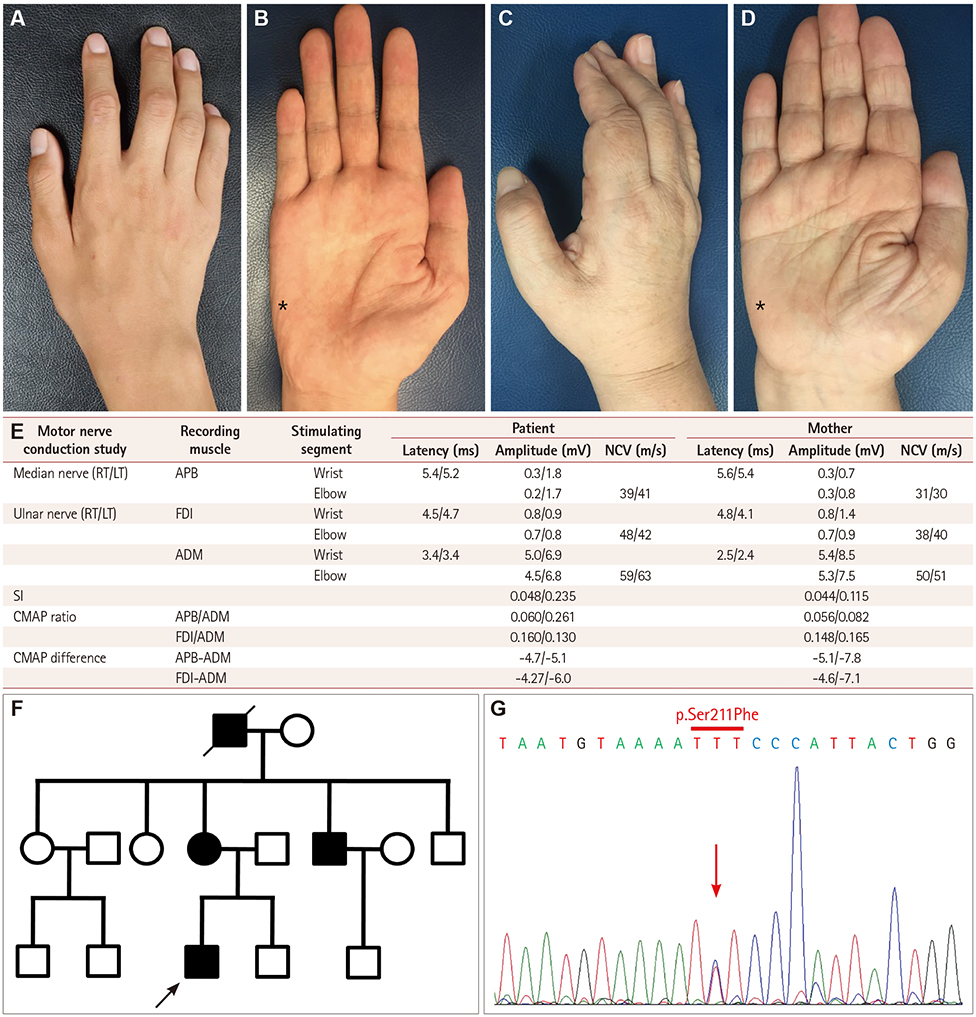J Clin Neurol.
2019 Oct;15(4):566-568. 10.3988/jcn.2019.15.4.566.
Split Hand Syndrome in a Family with GARS-Associated Axonal Neuropathy
- Affiliations
-
- 1Department of Neurology, Chonnam National University Hospital, Gwangju, Korea. nts0022@hanmail.net
- 2Department of Neurology, Chonnam National University Medical School, Gwangju, Korea.
- 3Department of Radiology, Chonnam National University Hospital, Gwangju, Korea.
- KMID: 2467768
- DOI: http://doi.org/10.3988/jcn.2019.15.4.566
Abstract
- No abstract available.
Figure
Reference
-
1. Antonellis A, Goldfarb LG, Sivakumar K. GARS-associated axonal neuropathy. In : Adam MP, Ardinger HH, Pagon RA, Wallace SE, Bean LJH, Stephens K, editors. GeneReviews® [Internet]. Seattle, WA: University of Washington;2006. p. 1993–2019.2. Sivakumar K, Kyriakides T, Puls I, Nicholson GA, Funalot B, Antonellis A, et al. Phenotypic spectrum of disorders associated with glycyltRNA synthetase mutations. Brain. 2005; 128:2304–2314.
Article3. Del Bo R, Locatelli F, Corti S, Scarlato M, Ghezzi S, Prelle A, et al. Coexistence of CMT-2D and distal SMA-V phenotypes in an Italian family with a GARS gene mutation. Neurology. 2006; 66:752–754.
Article4. Lee HJ, Park J, Nakhro K, Park JM, Hur YM, Choi BO, et al. Two novel mutations of GARS in Korean families with distal hereditary motor neuropathy type V. J Peripher Nerv Syst. 2012; 17:418–421.
Article5. Wilbourn AJ. The “split hand syndrome.”. Muscle Nerve. 2000; 23:138.
Article6. Eisen A, Kuwabara S. The split hand syndrome in amyotrophic lateral sclerosis. J Neurol Neurosurg Psychiatry. 2012; 83:399–403.
Article7. Menon P, Kiernan MC, Yiannikas C, Stroud J, Vucic S. Split-hand index for the diagnosis of amyotrophic lateral sclerosis. Clin Neurophysiol. 2013; 124:410–416.
Article8. Kuwabara S, Sonoo M, Komori T, Shimizu T, Hirashima F, Inaba A, et al. Dissociated small hand muscle atrophy in amyotrophic lateral sclerosis: frequency, extent, and specificity. Muscle Nerve. 2008; 37:426–430.
Article
- Full Text Links
- Actions
-
Cited
- CITED
-
- Close
- Share
- Similar articles
-
- A Case of Acute Motor Axonal Neuropathy
- Acute Motor Axonal Neuropathy Accompanied with Delayed Facial Diplegia
- Motor Axonal Neuropathy Associated With Idiopathic CD4+ T-Lymphocytopenia
- A Rare Case of Acute Motor Axonal Neuropathy and Acute Transverse Myelitis Overlap Syndrome
- One case of Subacute Sensory Neuropathy Associated with Primary Sjogren's Syndrome


